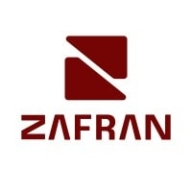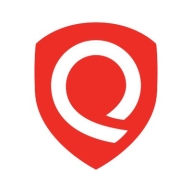


Microsoft Defender Vulnerability Management and Qualys CyberSecurity Asset Management compete in the vulnerability and asset management category. Microsoft Defender seems to have the upper hand with competitive pricing and robust customer service, whereas Qualys CyberSecurity Asset Management offers superior features.
Features: Microsoft Defender integrates threat intelligence and real-time risk analysis, offering seamless security management within Microsoft's ecosystem. It quickly identifies and mitigates vulnerabilities. Qualys CyberSecurity Asset Management provides comprehensive asset discovery, continuous monitoring, and extensive third-party integrations. It offers detailed asset management and risk assessment with granular control.
Room for Improvement: Microsoft Defender could enhance its capabilities by expanding integrations outside Microsoft products, providing more comprehensive asset visibility, and improving third-party cooperation. Qualys may improve by simplifying its deployment process, offering a more intuitive interface for non-technical users, and reducing the learning curve required to maximize its features.
Ease of Deployment and Customer Service: Microsoft Defender is straightforward to deploy, especially for organizations already using Microsoft products, facilitating smooth implementation and reliable support. Qualys, while more complex to deploy, offers extensive documentation and training, ensuring expert and timely assistance, which users find beneficial.
Pricing and ROI: Microsoft Defender provides a cost-effective solution, especially appealing to Microsoft users, offering significant ROI through bundled services. Qualys demands a larger initial investment but delivers impressive ROI via advanced features and enhanced security posture, making it a worthwhile investment for comprehensive asset management.



Zafran Security integrates with existing security tools to identify and mitigate vulnerabilities effectively, proving that most critical vulnerabilities are not exploitable, optimizing threat management.
Zafran Security introduces an innovative operating model for managing security threats and vulnerabilities. By leveraging the threat exposure management platform, it pinpoints and prioritizes exploitable vulnerabilities, reducing risk through immediate remediation. This platform enhances your hybrid cloud security by normalizing vulnerability signals and integrating specific IT context data, such as CVE runtime presence and internet asset reachability, into its analysis. No longer reliant on patch windows, Zafran Security allows you to manage risks actively.
What are the key features of Zafran Security?
What benefits can users expect from Zafran Security?
In industries where security is paramount, such as finance and healthcare, Zafran Security provides invaluable protection by ensuring that only exploitable vulnerabilities are addressed. It allows entities to maintain robust security measures while allocating resources efficiently, fitting seamlessly into existing security strategies.
Microsoft Defender Vulnerability Management enables organizations to identify vulnerabilities, manage patches, and fortify threat detection. It offers endpoint assessments, cloud incident management, and dynamic security through Microsoft's Security Scorecard integration.
Organizations leverage Microsoft Defender Vulnerability Management for advanced threat detection and response. It provides robust tools for vulnerability assessment and cloud incident management, integrated with Microsoft's Security Scorecard to enhance dynamic security profiling. Key features include automatic patch deployment, security configuration management, and seamless integration with Microsoft platforms, benefiting both on-prem and cloud environments. Organizations can track vulnerabilities with severity-based reports, helping manage outdated software and minimizing threat exposure.
What are the key features of Microsoft Defender Vulnerability Management?In healthcare, Microsoft Defender Vulnerability Management helps manage compliance with health regulations, while in finance, it aids in securing sensitive data from cyber threats. Manufacturing sectors benefit from its patch management, keeping operational technology systems less vulnerable to disruptions.
Qualys CyberSecurity Asset Management provides advanced real-time asset visibility, dynamic tagging, and External Attack Surface Management. It streamlines asset discovery and management using cloud agents and IP-based scanning, enhancing risk management and software lifecycle tracking.
Qualys CyberSecurity Asset Management offers a comprehensive solution for managing asset inventories and tracking software lifecycle states. It facilitates network visibility and supports zero-day vulnerability solutions, enhancing security posture through efficient monitoring. Users benefit from its cloud-based interface, which provides in-depth asset configurations and insights. Key features include automated vulnerability scanning and unauthorized software management, reducing manual efforts. The platform also emphasizes the importance of timely remediation and ongoing risk mitigation across multiple environments. Despite its strengths, users note the need for enhanced integration with additional CMDBs beyond ServiceNow, as well as cost efficiency improvements. Requests also include better report customization, more scan control, and a simplified UI.
What are the key features of Qualys CyberSecurity Asset Management?In industries like finance, healthcare, and manufacturing, Qualys CyberSecurity Asset Management enhances asset control by offering visibility into hardware and software configurations. It aids in maintaining security compliance and identifying unauthorized software, crucial for sectors with strict regulatory requirements.
We monitor all Vulnerability Management reviews to prevent fraudulent reviews and keep review quality high. We do not post reviews by company employees or direct competitors. We validate each review for authenticity via cross-reference with LinkedIn, and personal follow-up with the reviewer when necessary.